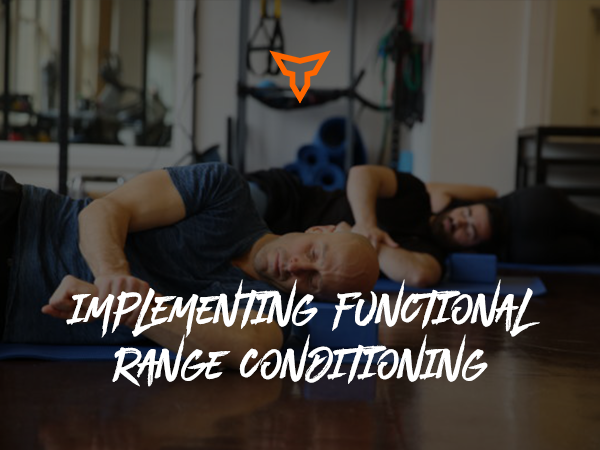Unlock Joint Health with Functional Range Conditioning (FRC)
The FRC System was developed by movement specialist Dr. Andreo Spina. Functional Range Conditioning is a system of joint health, and mobility training based in scientific principles and research. The FRC System of training applies scientific methods to expanding active, usable range of motion.
One of the primary bits of information that you are first taught in regard to FRC is the difference between Flexibility and Mobility.
Flexibility is the ability to passively achieve an extended range of motion, whereas Mobility is the ability to control ranges of motion. The definition of mobility is what Functional Range Conditioning is all about.
With FRC we are trying to expand our articular ranges of motion, while also teaching the central nervous system how to control these ranges of motion as well. FRC will also allow us to induce progressive adaptations for tissue preparation and safety.
Video - Here is an example of an in-place warm up utilizing FRC principles that is performed everyday before speed and plyometric work: https://twitter.com/JoeyBergles/status/1095847888100487168
The FRC System uses a variety of exercises to aid the athlete in increasing their active mobility. The first movements we have used successfully at Texas Tech are PAIL's and RAIL's.
How To Program FRC into TeamBuildr
PAIL's & RAIL's
- PAIL's = Passive Angular Isometric Loading
- RAIL's = Regressive Isometric Angular Loading
PAIL's uses isometric conditioning in progressively larger articular angles in order to simultaneously expand and strengthen increasing ranges of motion, where RAILS uses isometric conditioning in progressively smaller articular angles to simultaneously expand and strengthen decreasing ranges of motion.
The primary idea behind the PAILS/RAILS exercises is to utilize incremental strategies in order to induce adaptive mechanisms in various tissues. As you continue to progress with your PAILS/RAILS the body will respond to progressing movement when you add more load, thus allow you to gain more function over time, this is similar to weight training.
Video - Hip mobility work with offensive and defensive linemen: https://twitter.com/JoeyBergles/status/1101534245154181122
"Rack hip axials are no joke! Great way to open up the hip capsule!
CAR's
The next exercise that I will discuss as a part of the FRC training system that we use are a series of movements we call CAR's, or Controlled Articular Rotations.
CAR's utilizes active, rotational movement drills at the outer limits of motion in order to teach articular adaptation, outer range control and kinesthetic awareness. CAR's utilizes multi-directional movements thus maximizing articular capsule activation. CAR's teaches the CNS how to control these new ranges of motion that were gained during Pails/Rails. When utilizing CAR's all rotations are conducted actively and in a controlled manner with constant attempts on “expanding the circle." We must ensure neurological control to safely prepare an articular complex for more advanced movement. In order to improve neurological control, we want to provide the CNS with as much feedback as possible.
The Utilization of both PAILS/RAILS and CAR's has been a game changer for our program. We have seen the benefits with all of our student-athletes. If any coaches reading this are interested in learning more about the FRC program please visit their website at: www.functionalanatomyseminars.com
Subscribe to our blog
Subscribe to receive the latest blog posts to your inbox every week.
Related posts

Using Functional Range Conditioning (FRC) with Teams

Learn Early and Often: Lessons from My Internships



